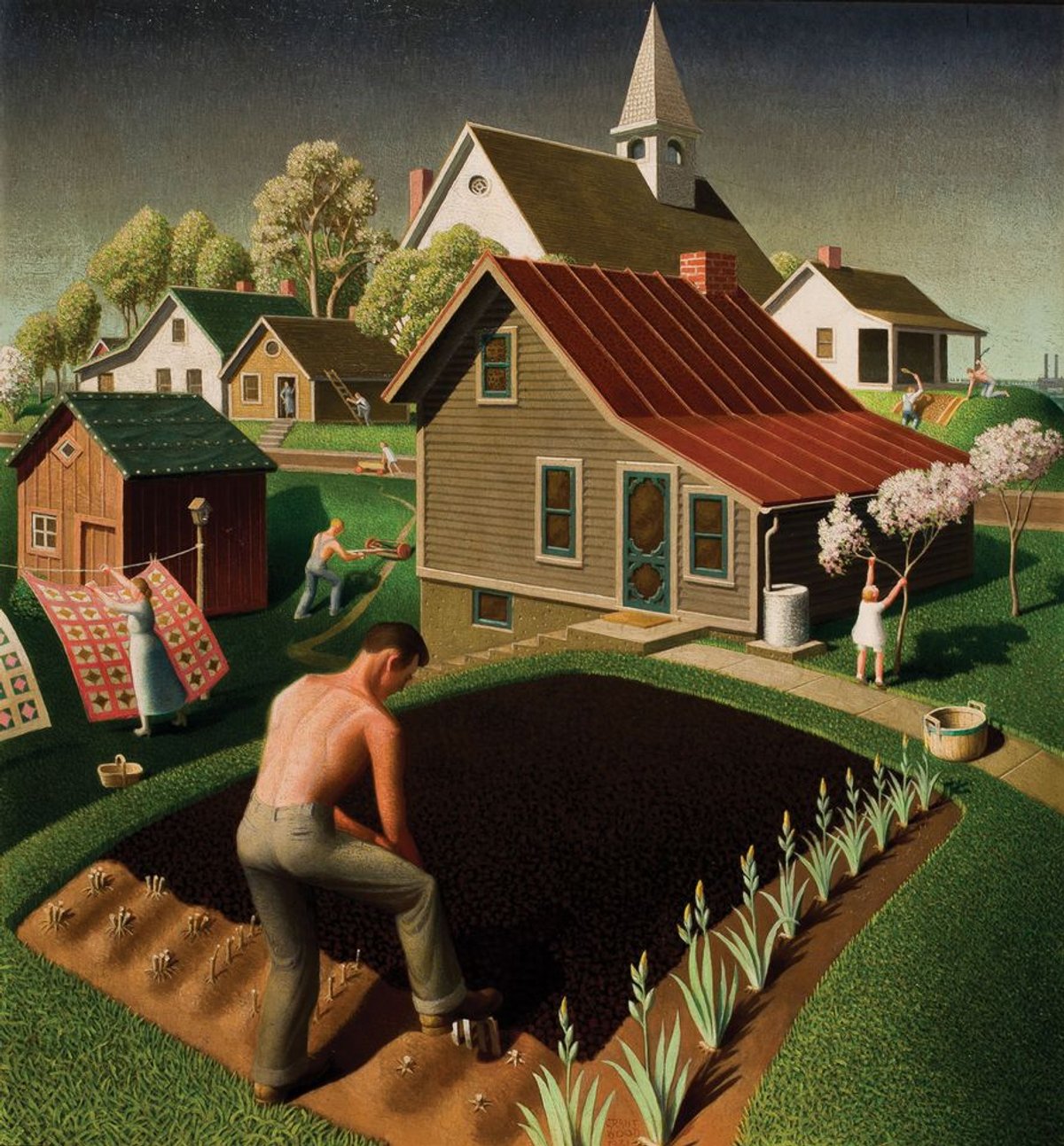The American artist Grant Wood “did not set out to create a vision of America”, says Barbara Haskell, the co-curator of the Whitney Museum’s survey show Grant Wood: American Gothic and Other Fables (until 10 June). “He set out to make images of Iowa. Over time, that came to be seen as American identity.” The exhibition, which presents around 120 works, is the most inclusive assessment of Wood’s career to date, and reframes the old picture of the artist as an American Regionalist stuck in the bygone 1930s. Instead, the show emphasises the tension, ambiguity and resonance of his mature style from 1930-42. Highlights include Wood’s early Arts and Crafts work (he began his career as a decorative artist), a scaled reproduction of his 1928 stained glass window in Cedar Rapids, Iowa and his most famous painting, American Gothic (1930), which seldom travels from the Art Institute of Chicago. Wood’s paintings provoked debates about the rural-urban divide, the problem of populism and what defines American culture—questions that are not unfamiliar today.
Like Life: Sculpture, Colour and the Body (1300-Now) at the Met Breuer (until 22 July) broadly considers how sculpture has sought to replicate the human form, particularly through colour, with 120 objects that date from the early 14th century to the present day. The discussion includes a mixed roster of big-name artists, including Donatello, El Greco, Edgar Degas, Louise Bourgeois and Jeff Koons. But look out for “a mass of material that’s never been lent and that would not normally find its way into a Met show”, says the co-curator Luke Syson, pointing to a Sleeping Beauty from Madame Tussauds wax museum in London, as well as a breast-shaped porcelain cup that Marie Antoinette used in her sumptuous pleasure dairy at Versailles. The works are often gruesome, such as an 18th-century “Anatomical Venus” from the Florentine Fontana workshop, a life-sized reclining nude woman in wax, whose torso is split open to reveal realistically-rendered organs.
The depictions of people are more beautiful in the exhibition Robert Mapplethorpe, Curated by Roe Ethridge (until 14 April) at Gladstone Gallery’s 24th Street location, the gallery’s first show of Mapplethorpe’s work since it announced its representation of the artist’s estate last year. The show is a comprehensive view of Mapplethorpe’s career, with 50 black-and-white gelatin print photographs of subjects including portraits of those in his circle like his intimate friend Patti Smith, a shirtless shot of Richard Gere, close-ups of male genitals and his tamer but sensual flower pictures. One especially haunting shot is a self-portrait of the artist, close-cropped around his eyes, from 1988, the year before his death. Though some of the images might not be as shocking now as they were when the Corcoran Gallery of Art in Washington, DC cancelled Mapplethorpe’s show in 1989, a standing portrait of the actress Eva Amurri at three years old (1988), in the nude and partially covering herself, might be just as jarring today.




